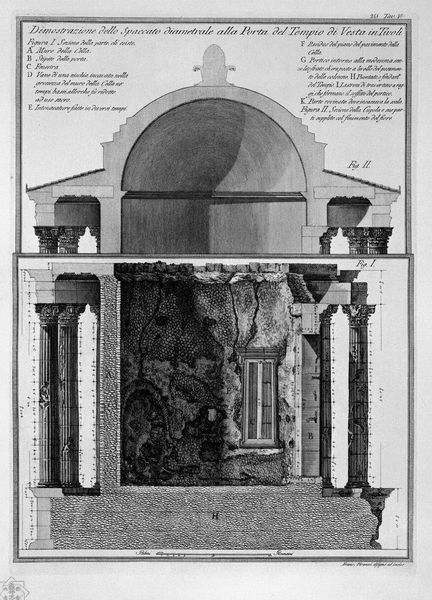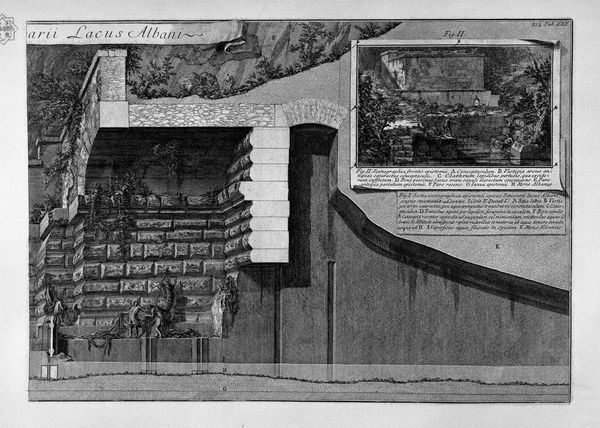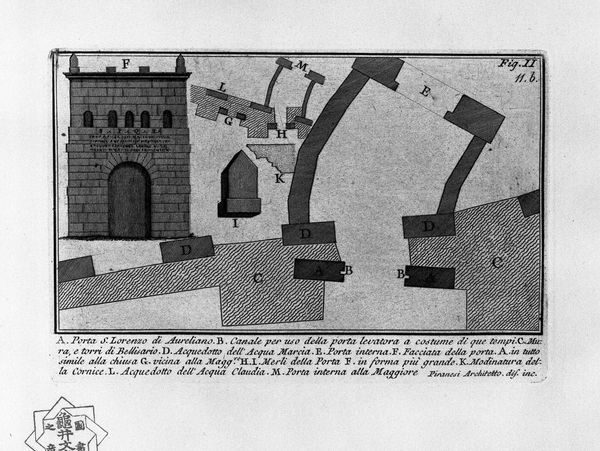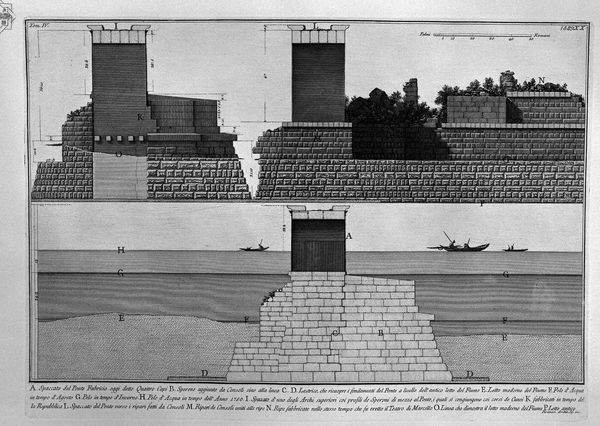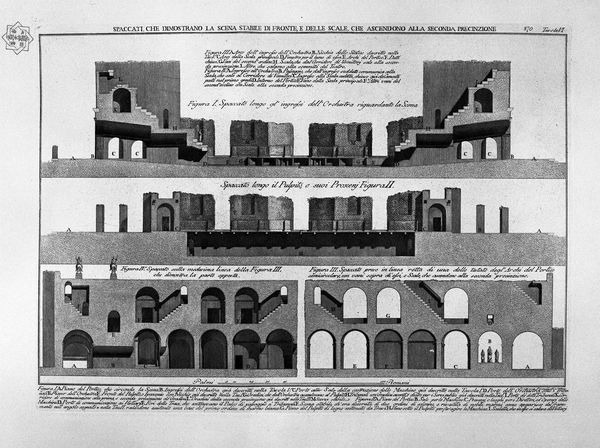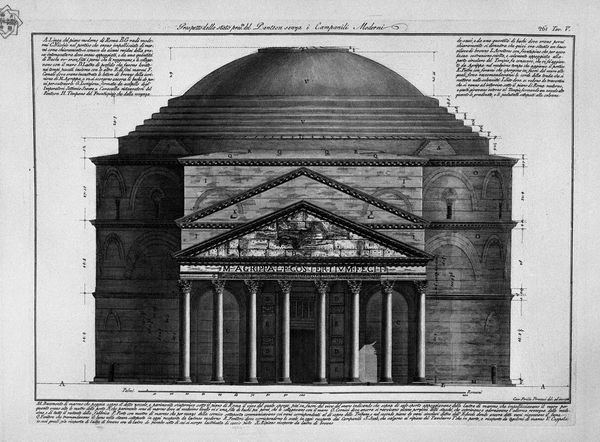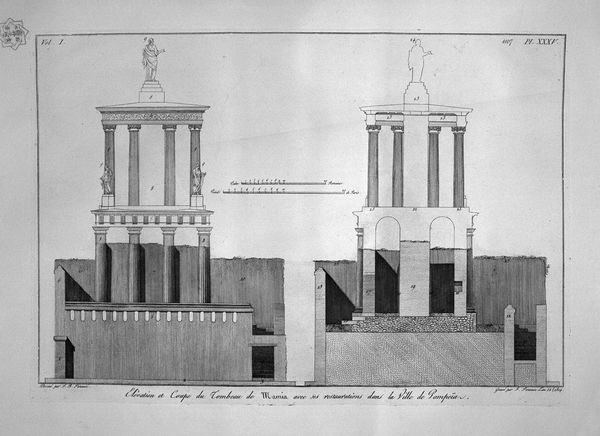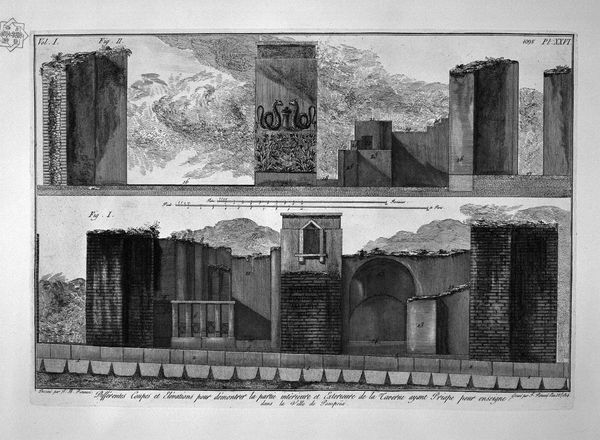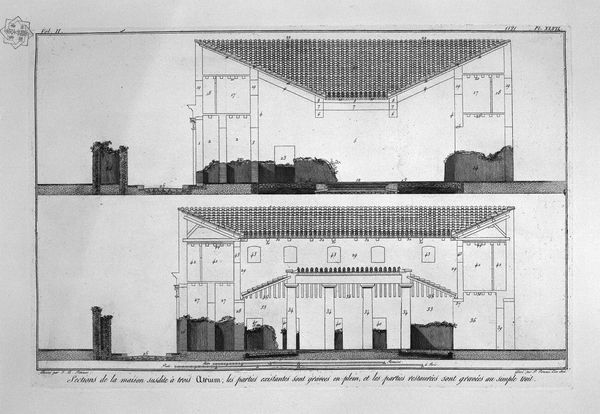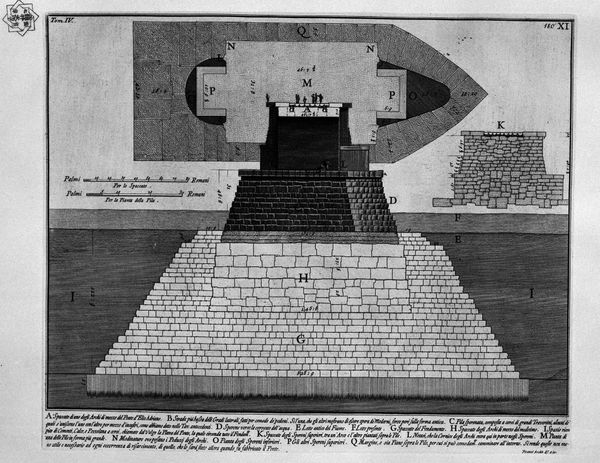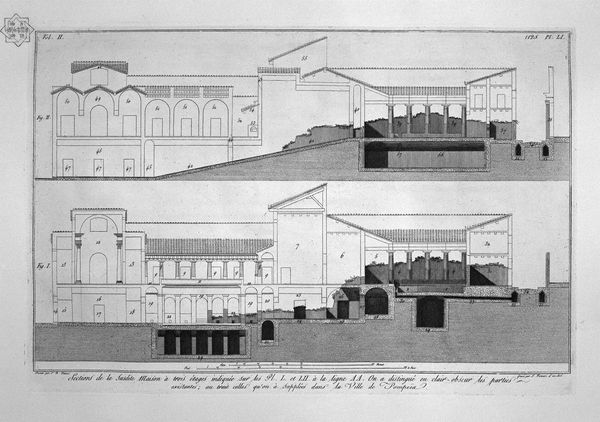
drawing, print, engraving, architecture
#
drawing
# print
#
old engraving style
#
romanesque
#
geometric
#
column
#
engraving
#
architecture
#
building
Copyright: Public domain
Giovanni Battista Piranesi made this etching, "Duct of Caracalla," sometime in the 18th century. The print is a cross-section of the ancient Roman baths, revealing both the scale of the architecture and the ingenuity of its design. Piranesi likely used etching and engraving, combining the acid-resist techniques of the former with the precision of the latter, enabling him to create a wide range of tones and textures. Notice the sheer amount of labor involved in the original construction of these structures, which is echoed in the effort required to depict them. The etching process itself is painstaking. We are reminded that the baths were a product of imperial power, dependent on the exploitation of resources and labor. This print bridges fine art and the documentation of material culture, reminding us that both practices involve skilled handwork. Ultimately, it challenges us to consider the connection between aesthetics, labor, and the social context of production.
Comments
No comments
Be the first to comment and join the conversation on the ultimate creative platform.

